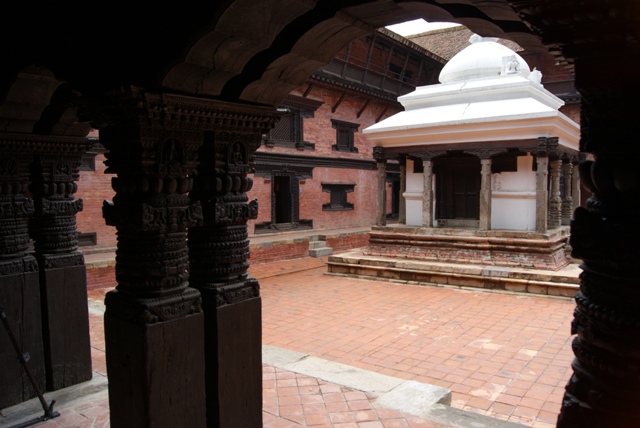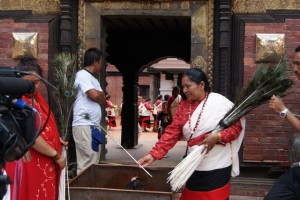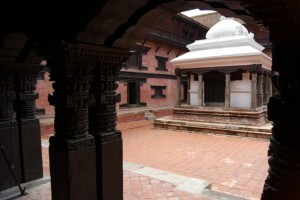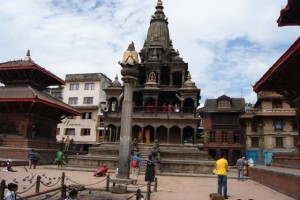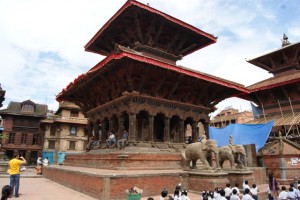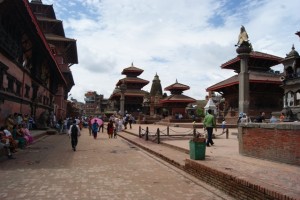(The following travelogue on Nepal is based on the series ‘See More Nepal’ written and directed by me for Travel Trendz TV.)
The ancient city of Patan, known as the city of fine arts, is just 5km southeast from Kathmandu. It is widely believed to have been founded by Emperor Asoka in the third century BC though there are no proofs to support it. The place is also called Lalitpur which means ‘the beautiful city’. The day I came to Patan Square happily coincided with the Krishna Janmashtami celebrations, the birth anniversary of Lord Krishna. I was privy to the peoples’ enthusiasm about the local festivities and beliefs – which are celebrated with the same pomp and splendour the way it was centuries ago. The devotees – all attired in traditional finery – had assembled in the Krishna Mandir, the ancient temple in Patan Square. They also visit other temples which deify Lord Krishna and offer prayers, food, flowers and sweets. They chant hymns all the while, invoking the god’s blessing for a fruitful year ahead. Patan is the oldest among all the cities in the Kathmandu Valley. It was a well developed and hugely progressive town right from the earliest days. The city was designed in the shape of the Buddhist Dharma Chakra or the Wheel of Righteousness and it is believed that the great Emperor Asoka came visiting Patan with his daughter Charumati in 250BC and built Buddhist stupas here. There are approximately 1,200 Buddhist monuments spread around the city. The most famous Buddhist landmark here is the Golden Temple, a short walk from the Durbar Square. The Patan Durbar Square today is one of the World Heritage Sites listed by UNESCO. It is a city of arts and artists and craftsmen with undisputable skills. The majority of the population follow Buddhism, but you also find exquisite Hindu temples in addition to the bronze gateways, marvellous statues, guardian deities and beautiful carvings in metal, wood and stone. The shops lining the palace square are a delight for anyone interested in curios. Handicraft shops with a wide variety of statues and idols leave a lot of options as far as souvenirs go. The Royal Palace, guarded by Narsingh on the outside, is a spectacular sight and a singular example of the Newari style of architecture. Inside the courtyard of the palace is a small temple where the locals pray today. The gilded statue of King Yoganarendra Malla, one of the most powerful of the Mallas, prays on top of a pillar shaded by the hood of a cobra. A bird is seated on the cobra and legend says that the king will be remembered and will remain immortal as long the bird does not fly away. The Krishna Mandir, on the northern side of the palace courtyard, is one of the most exquisite temples in the whole of Nepal. It was built in 1637 by King Siddhi Narsingh Malla after he had a dream of Lord Krishna and his consort Radha. A statue of Garuda on a pillar faces this embodiment of elegance. The temple is an example of Shikhara style architecture made entirely of stone and has scenes from the epics Ramayana and the Mahabharata. Thanks to the superb craftsmanship of the artisans, intricate woodcarvings, quite deep in detail, are to be seen everywhere. A lot of rebuilding took place from the 16th to the 18th centuries under the Mallas and has undergone renovation in recent years. The Bishwanath Mandir is a double roofed pagoda guarded by stone elephants and decorated with fabulous carvings. Though the fierce monsoons of 1990 destroyed the entire building, it was reconstructed.A short walk from the durbar square, in a temple which goes back 800 years, a little boy holds the chair of the high priest. The Bahals are two-storey Newar Buddhist monasteries and a short walk away from the Durbar Square is the most famous of them, the Kwa Bahal. This is also known as the Golden Temple. The entrance to this ancient place of worship is guarded by two lions and legend has it that it was built by a queen in the 12th century. Inside this building are metal works which show exquisite craftsmanship. A hotspot for Buddhists from all over the world, the rich friezes inside depict Buddha is his different avatars. Inside the temple are large prayer wheels as well as large statues of Buddha. A protected shrine holds an elaborately decorated Buddha looking at believers through bright, unblinking eyes. The main priest of this temple is a small boy who has not yet reached his teens.
A melee of colour, a profusion of culture and an exuberant heritage, the Patan Durbar is where architecture is at its evocative best. Where gods and kings mingle with the mortals. This is where history comes alive. In its truest spirit.

